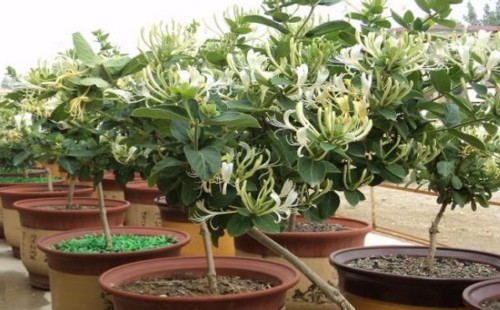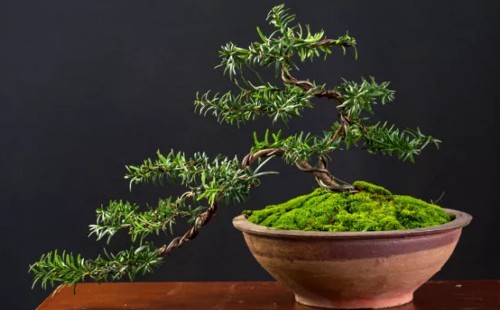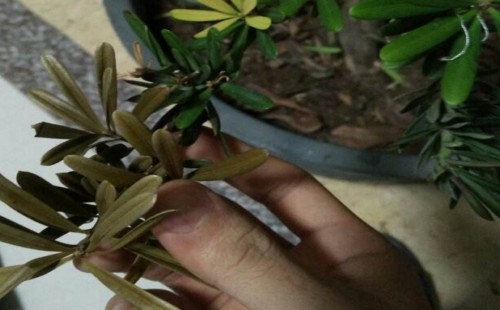How to raise potted honeysuckle
Honeysuckle has been planted in a large area because of its high medicinal value and health care effect, and the market prospect is good. However, in addition to ground cultivation, honeysuckle can also be potted, after dwarfing treatment, in addition to medicine, but also for viewing. However, compared with the ground planting, the conservation and management of potted honeysuckle often pay much more efforts. So, how to raise potted honeysuckle?

Honeysuckle has the characteristics of drought tolerance, cold tolerance, shade tolerance, water tolerance, barren tolerance and so on, but at the same time it prefers the growth environment with sufficient light and warm environment. If it is planted on the ground, it is often easier to raise, even if it is planted outdoors, there is no need to worry about the lack of light and moisture, but it just needs to be fertilized properly. If potted plants, we often need to manage from the following aspects.
I. Lighting
Honeysuckle is a sunny plant, which usually needs to provide adequate light and ensure a well-ventilated environment. If the light is insufficient and the water is sufficient, the stems of honeysuckle will often grow too long, and the branches are relatively slender and weak, and the leaves are easy to yellowing and fall off, thus affecting flowering. Therefore, it is generally necessary to provide a long sunshine environment for it.
Second, temperature
Honeysuckle prefer warmth, but also very cold-resistant, strong survivability, often in the environment between-4 ℃-35 ℃ can survive. When the temperature in the growing environment reaches 4 ℃, honeysuckle can sprout smoothly, and when the temperature is above 22 °C, it can enter the first round of flowering. Generally speaking, the temperature of 11 ℃-25 ℃ is the most suitable for growth.
Third, watering
As a result of potted cultivation of honeysuckle, and the space in the flowerpot is limited after all, it is impossible to get a lot of water from the soil like the ground planting. And honeysuckle itself also likes to be wet and resistant, so it should be watered in time during the growing period and can be watered once every 3-5 days. However, in spring, there are often more Rain Water because of the continuous spring rain, so it is generally necessary to properly control watering; usually the water supply is based on "dry and wet", and it is more appropriate to maintain the moisture in the soil at about 30%.
IV. Fertilization
At the same time, due to the limited space of flowerpots and small amount of soil, nutrients are naturally limited. Original and with the long-term growth of the plant, the nutrients in the basin are getting less and less, so it is necessary to apply fertilizer properly. However, before flower bud formation, nitrogen fertilizer should be controlled or less applied to avoid excessive growth of branches and leaves, but phosphorus and potassium fertilizer should be applied to promote flower bud formation and increase the number of flowers. After the branches stop germination and growth, especially in the bud stage, nitrogen fertilizer should be applied properly, which can improve the flowering quality of Flos Lonicerae. The growing season is dominated by phosphorus and potassium fertilizer, which can be applied once a week to sturdy branches.
5. Pruning
Honeysuckle in the growth period should be timely cut off too exuberant and intertwined branches and buds; for the growth of thin branches and buds, in order to avoid affecting the effect of ventilation and light transmission, it should also be removed in time. As for the branches and buds that are too prosperous during the growth period, they should pick the heart in time and generally take the practice of cutting long and leaving short. As a potted plant or bonsai, it also needs to be trimmed before it germinates from winter to the following spring to make the plant feel more layered.
VI. Change the basin
For potted honeysuckle, in addition to the need to do a good job in the management of the above aspects, it is also necessary to change the basin, which can be maintained every 2 years. As a bonsai, it is generally possible to change the basin every 3-4 years. If the pot is not changed in time, it will inevitably affect the normal absorption function of the root system, so that the plant appears premature senescence, affecting the tree potential and flowering at the same time. Therefore, it is necessary for us to change the pots of honeysuckle regularly.
Time: 2019-05-29 Click:
- Prev

Culture methods and points for attention of Taxus mairei bonsai
Taxus mairei is a kind of high quality tree species in landscaping with good greening and beautification effect. At the same time, because it is easy to shape and strong ornamental, it is often used to make high-grade bonsai after dwarfing treatment, and it keeps evergreen all the year round, and has considerable multiple ornamental effects of stem, branch, leaf and fruit.
- Next

What's the matter with the yellow leaves of Luohansong? what if the leaves turn yellow?
Luohan pine is a kind of tree species that can keep evergreen all the year round, and it is also a good material for making bonsai. Because the wild growth is relatively rare and it is difficult to breed, it has once become a cherished tree species and was included in the list of national protected tree species.
Related
- Fuxing push coffee new agricultural production and marketing class: lack of small-scale processing plants
- Jujube rice field leisure farm deep ploughing Yilan for five years to create a space for organic food and play
- Nongyu Farm-A trial of organic papaya for brave women with advanced technology
- Four points for attention in the prevention and control of diseases and insect pests of edible fungi
- How to add nutrient solution to Edible Fungi
- Is there any good way to control edible fungus mites?
- Open Inoculation Technology of Edible Fungi
- Is there any clever way to use fertilizer for edible fungus in winter?
- What agents are used to kill the pathogens of edible fungi in the mushroom shed?
- Rapid drying of Edible Fungi

